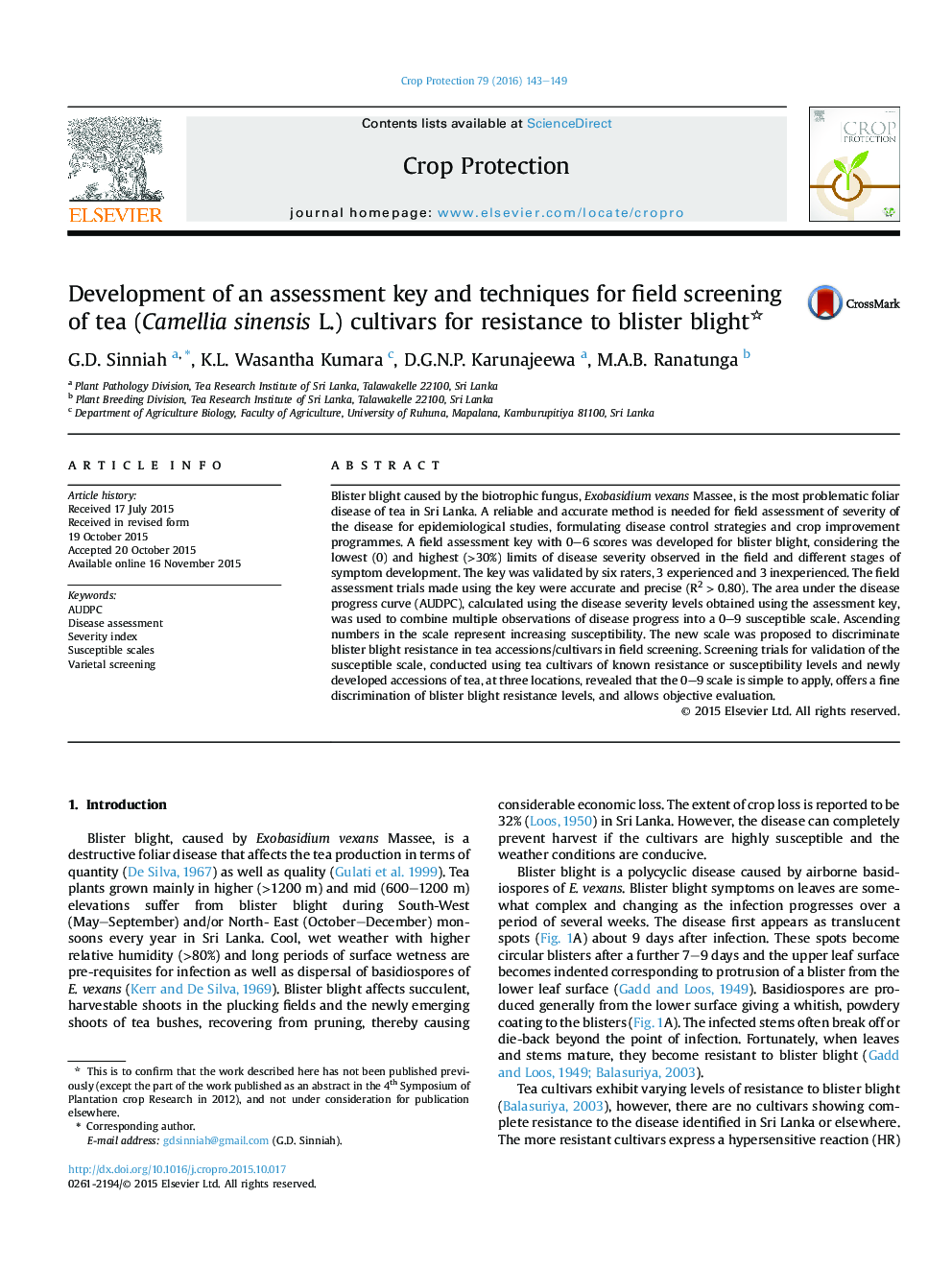| کد مقاله | کد نشریه | سال انتشار | مقاله انگلیسی | نسخه تمام متن |
|---|---|---|---|---|
| 4505624 | 1624308 | 2016 | 7 صفحه PDF | دانلود رایگان |

• Blister blight is the most problematic foliar disease in tea (Camellia sinensis).
• An assessment method is a prerequisite to identify resistance and quantify crop loss.
• Blister blight assessment key and cultivar screening method are proposed.
• Host resistance is the most effective and economical means of reducing the disease.
Blister blight caused by the biotrophic fungus, Exobasidium vexans Massee, is the most problematic foliar disease of tea in Sri Lanka. A reliable and accurate method is needed for field assessment of severity of the disease for epidemiological studies, formulating disease control strategies and crop improvement programmes. A field assessment key with 0–6 scores was developed for blister blight, considering the lowest (0) and highest (>30%) limits of disease severity observed in the field and different stages of symptom development. The key was validated by six raters, 3 experienced and 3 inexperienced. The field assessment trials made using the key were accurate and precise (R2 > 0.80). The area under the disease progress curve (AUDPC), calculated using the disease severity levels obtained using the assessment key, was used to combine multiple observations of disease progress into a 0–9 susceptible scale. Ascending numbers in the scale represent increasing susceptibility. The new scale was proposed to discriminate blister blight resistance in tea accessions/cultivars in field screening. Screening trials for validation of the susceptible scale, conducted using tea cultivars of known resistance or susceptibility levels and newly developed accessions of tea, at three locations, revealed that the 0–9 scale is simple to apply, offers a fine discrimination of blister blight resistance levels, and allows objective evaluation.
Journal: Crop Protection - Volume 79, January 2016, Pages 143–149